Is your business spending thousands of dollars acquiring leads? If yes, then why are acquired leads slipping through the cracks? Well, a broken lead nurturing process can be the reason.
Let’s be honest, nobody likes losing out on hard-earned leads. However, lead nurturing best practices can turn the tables for your business.
With effective lead nurturing, your business can guide prospects to the final purchase decision without being too pushy. Moreover, you can even offer relevant information based on the lead’s current position in the sales cycle.
Additionally, you can even increase the chances of conversions and maximize your business’s profitability. A well-crafted strategy that considers all the stages of the sales funnel, customer expectations, and market trends can help you nudge more prospects toward sales.
Excited to learn more? This blog lists 8 best practices that can strengthen your nurturing strategy. It also highlights the importance of a CRM tool for nurturing leads.
What is Lead Nurturing?
Lead nurturing refers to the process of engaging with prospects and encouraging them to convert into customers. It involves providing meaningful information complementary to their position in the buyer’s journey.
When a lead is acquired, it enters the sales funnel. Most inbound marketers separate the lead nurture funnel into three steps:
- Top of the Funnel (TOFU)
- Middle of the Funnel (MOFU)
- Bottom of the Funnel (BOFU)
The type of content that is more relevant for the lead depends on its current funnel stage.
TOFU leads require material that helps them get acquainted with the business. They can be offered educational content such as introductory videos to help identify their challenges and learn how to overcome them.
MOFU leads are in the consideration stage. This means that they require content that supports your argument of why your business is better than other competitors. The content that can be delivered at this stage includes case studies, in-depth comparison guides, etc.
Finally, BOFU leads are close to making the final decision. These leads should be offered promotional offers that encourage them to choose you over other businesses that they are considering.
The objective of your lead nurturing program should be to educate the leads in the best way possible. It essentially involves- capturing leads from various sources, initiating contact with them, gauging their interest, and offering nurturing content based on their responses and requirements.
What Makes Lead Nurturing Important?
It goes without saying that not every lead generated by your marketing efforts will be ready to make the purchase immediately. However, such leads would be interested in learning more about your business. Therefore, you require lead nurturing best practices to address their possible concerns and objections.
However, most businesses are too focused on lead generation. You would be surprised to know that a whopping 80% of these leads never make it to the sale stage.
A significant reason for this is – while many businesses are able to bring in good leads, they are too focused on selling right off the bat. This discourages the prospects and drives them away. There are several other reasons why all leads do not translate into sales. An effective lead nurturing program helps identify and overcome such problems to drive more conversions.
The most significant benefits of lead nurturing for an enterprise include:
Build Trust:
By focusing on educating prospects and empowering them to decide for themselves, a business can quickly enter their good books. Building this trust can boost profitability and retention.
Convert More Leads:
A nurturing strategy helps guide more leads through the sales funnel. In the absence of a consistent plan, things can easily go haywire, and the potential of important leads can go untapped.
Make More Profit:
Nurtured leads are highly likely to make bigger and more purchases. This is because the nurturing process establishes their trust in your business and they are better equipped to make an informed decision.
Investing time and resources into nurturing a lead helps businesses close more profitable sales by acquiring a credible position.
Get Better Leads:
Lead nurturing helps you better understand customer needs. This can enable your marketing team to understand what types of leads are better qualified for your business. As a result, they can bring in more relevant leads that the sales team can then easily convert into customers.
8 Lead Nurturing Best Practices
Lead nurturing encourages prospective customers to take action. For effective nurturing, a business needs to have a consistent strategy that takes into account the customer journey and needs.
Let’s look at the best practices that can be used to build this strategy for your business:
Score & Segment Leads:
Qualification of prospects is essential to ensure effective utilization of time and resources. With a lead scoring system in place, you can identify which leads require more nurturing. It essentially involves assigning a score to leads based on a pre-defined set of criteria. This could include their budget, purchasing authority, or certain actions taken by the prospect, such as downloading an e-book, filling a form, etc.
Deciding which leads should be nurtured is an important step that should not be skipped. For effective qualification, you must know your ideal customer persona and compare the available leads against it.
The next step is to segment your leads based on their interests, demographics, preferences, or other relevant factors. By segmenting your prospects effectively, you can target them better. Segmentation allows you to offer more personalized experiences instead of generic information.
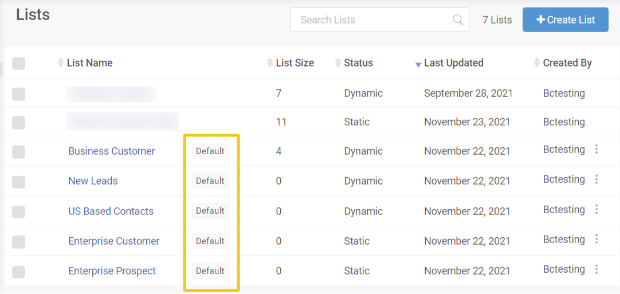
Bring Sales & Marketing Teams Together:
Alignment between sales and marketing is a prerequisite for successful lead nurturing. Such an alignment can bring clarity about various touchpoints in the buyer’s journey and help optimize the content to be delivered to the leads. Without proper communication and collaboration between sales and marketing teams, there would be several ambiguities in what makes a good prospect and how they transition from one stage to the next.
Sales representatives have a better understanding of what type of content is more effective. Bringing sales and marketing together can help the marketing team seek insights from sales representatives. The marketing team can utilize their time more efficiently with a clearer picture of which prospects qualify as high-value and which sources bring in such leads. Consequently, the leads passed on to the sales team will have more potential to make the purchase.
Personalized & Targeted Emails:
Targeted email outreach can build trust and help you drive more leads to conversion. It can help you form a stronger relationship with your prospects. There are several ways to personalize your emails to make your prospects feel valued. This can include modifying the email according to their needs, pain points, interests, or previous interactions. Use a CRM tool to obtain and store necessary information for leads, to be utilized for personalization later.
Measure Performance:
Without measuring lead nurturing performance, you will never find out if your campaigns produce the results you expected. Tracking how many leads you get and how many of these convert into customers provides you the opportunity to identify what worked well and incorporate those actions in your nurturing strategy.
If your nurturing campaigns are not meeting the expected goals, try to figure out what went wrong.
Was your content well-targeted?
Did you segment your leads properly?
Finding answers to such questions can allow you to fine-tune your nurturing strategy. Use CRM reporting and analytics to identify which sources bring in the most qualified leads, which actions help these leads move forward, and what bottlenecks exist in your sales funnel.
Use Multiple Channels:
You must look beyond email as a lead nurturing tool. Using multiple channels to offer nurturing content can boost engagement. It can help you connect with the audience using their preferred channel, contributing to enhanced trust in your business. These channels include social media, offline advertising, etc.
A prospect requires multiple touchpoints before they are ready to make the purchase. By utilizing various channels, you can boost interest in your business and motivate prospects to convert. Utilizing multiple channels allow you to remain in constant touch without being too intrusive. It helps ensure that all the necessary information is delivered to the prospects using their preferred communication medium.
Follow-up at the Right Time:
An essential component of the leads nurturing process is to ensure that prospective customers are contacted at the right time. For instance, an immediate follow-up call with website visitors is the perfect opportunity for you to leverage their interest in your business for making the sale.
Identify the most appropriate time to connect with your prospects. It is also essential to find out the right frequency for contacting your prospects. If you do it too sparsely, the prospect may lose interest or start looking for solutions elsewhere. Do it too frequently, and you run the risk of being too overwhelming. Therefore, you must figure out the perfect pace for your lead nurturing efforts.
Retarget Leads:
Did you know that marketers using retargeting can achieve a retention rate of up to 59%?
Retargeting involves focusing on leads that are aware of your business and have already engaged with you in some form. Such leads have seen some of your content but require more nurturing before purchasing. Including retargeting in your nurturing strategy can help you stay on top of the mind of prospects who have already viewed your product or service before.
To retarget these prospects, track their previous activity, and modify your interactions accordingly. For example, you can welcome back a lead that has previously visited your website and set up the next steps based on the content they looked at earlier.
Build Thought Leadership:
Of course, not all types of informational content are created the same. Ideally, your content should serve to build up your thought leadership in your audience’s perception. In other words, your messages should establish you as an industry expert in your leads’ minds. This will build the trust and credibility you need to make the sale at a later stage in the funnel.
There are many ways to build thought leadership, but they all come back to the same principle: publish content about your industry rather than your company, and add your own opinion and spin to it. For example, rather than simply regurgitating industry news, speculate what it might mean and how it might affect businesses. You can do so via a blog post, white paper, hosting a webinar, or directly within an email.
Other Tips for Lead Nurturing
Here are some other ways to improve lead nurturing for your business:
Introduce Yourself Professionally:
Your very first emails should be about introducing yourself to your leads properly. Many of the brand new contacts in your database may not yet know much about you; in fact, that could be the very reason they signed up to become a lead in the first place.
Don’t jump straight to listing the advantages that your business offers. Give your leads the time to analyze what they are looking for and how your business fits into the picture.
Offer Informational Content:
Even after your initial introduction, your first emails and other types of communication with your leads should remain informational. It’s too early here to start pushing your products and services; after all, your contacts probably didn’t sign up to become leads because they immediately wanted to become customers.
One of the email nurture campaign best practices is to keep your content informational. Try to address the clients’ pain points and how your product or service can add value to their business. This builds trust with your audience that will be crucial later. Additionally, keep your blast emails separate from your nurturing campaigns to gain more credibility. Another crucial thing to gain credibility is to take email security seriously, use an SPF record checker and keep email leads data secure from attacks.
One-to-One Engagement:
One-to-one interactions add a personal touch to your lead nurturing campaigns.
Make sure that your team engages with the prospects individually. This can build trust and increase your chances of conversion. There are various ways to engage with your prospects beyond the nurturing content you share. These include meetings, phone calls, social media interactions, etc. Personal conversations in between nurturing checkpoints can drive more engagement.
Offer Connection Opportunities to TOFU Leads:
Offer your TOFU leads the opportunity to connect with your company – not to mention other current and potential customers – beyond being a mere part of the database. In most cases, that means providing links to your social media accounts, along with reasons for why your audience might want to follow that account.
Your business may use a Facebook account to discuss industry news, or simply build your community. Share your social media handles or community forum links with TOFU leads so that they can become part of your community.
Make Use of Content Marketing:
Content marketing can be a valuable tool in your marketing arsenal, that enables you to deliver valuable information to prospective customers and encourage them to take action. Perfectly aligning your content according to the stages of the buyer’s journey can help you boost engagement.
You can repurpose your content to make it useful for lead nurturing. Carry out a thorough analysis of your existing content, including videos, blog posts, e-books, etc., and identify how they can fit into your nurture strategy. Optimize your content to be more engaging and relevant to your target audience.
Determine which stage can benefit from which type of content by seeking feedback from your sales team and existing customers. Use data from previous campaigns to determine which content piece received more traction and include more of it in your nurturing marketing strategy.
Refine Your Program:
It is highly probable that your lead nurturing efforts will not be a hit instantly. However, you shouldn’t get disappointed by this. Over time, you will have a better idea of what works well for your leads. Evaluate your efforts routinely and make a note of what works well and what does not. Use this information to set up a consistent lead nurturing program. Remember-
Building a lead nurturing strategy is not a one-off job. Rather, it is a continuous process of feedback and upgrades.
Therefore, you must review and refine your lead nurturing plan from time to time.
Practices to Avoid
Having listed various nurture campaign best practices, it is also essential to highlight what not to do.
Relying Entirely on Email Marketing:
Contrary to common beliefs, lead nurturing is not only about email marketing. While it does occupy an important position, lead nurturing extends beyond just emails. For effective lead nurturing, you must understand your customer base, segment them into relevant groups, and offer supporting marketing material that can help them during the buying process. You can include other lead nurturing elements such as chatbots, retargeting efforts, social media engagement, etc.
Not Knowing the Leads Well Enough:
The first step to understanding how to nurture leads properly is to know your prospects well. If you do not know your leads well enough, you will end up wasting your time and efforts offering them irrelevant information. This can result in frustration and lost opportunity. To avoid this, you must be aware of the interests, expectations, and needs of your leads. This information can help you understand your ideal customer profile and optimize future outreach strategies. You can also use surveys to seek such information from your customers.
Being Too Intrusive:
With so many promotional emails crowding their inbox, customers prefer businesses that email them as rarely as possible.
Businesses that incessantly send out emails to customers earn a bad reputation.
To avoid this, maintain a steady pace of delivering emails to the subscribers. While it is essential to stay engaged, you must also ensure that you are not sending emails merely for the sake of it. Understand various advantages and disadvantages of email marketing to prevent your emails from turning into spam. With the right frequency and quality of emails, you can deliver your message without being too annoying.
Not Tracking the Right Metrics:
Ensure the effectiveness of your nurturing efforts by monitoring campaign performances continuously. It is equally important to pay attention to what metrics you are tracking. Focus on how many leads you generate and how many of these convert into sales. Seek feedback from your team members on which metrics are the most relevant to your business and include them in your nurturing strategy.
Investing in the Wrong Software:
Making the wrong choice in the software that you choose can considerably hamper the productivity of your nurturing efforts. Select a software that perfectly meets your unique needs. Go for a lead tracker offering automation and other advanced functionality to move prospects forward in the sales cycle easily. The right tool can assist you in managing leads and nurturing them with better personalization.
A customer relationship management tool that keeps lead information well-organized and accessible can improve nurturing. Such a tool can also help track the movement of leads, measure progress and monitor the performance of your lead nurturing campaign.
Let’s explore CRM lead nurturing in more detail.
Role of CRM in Lead Nurturing
Lead nurturing cannot be achieved without the right technology.
To nurture your leads, you need to implement effective software that allows you to set up email automation, track lead’s position, and personalize outreach.
With a lead nurturing CRM, you can send an automated responder email once a contact fills out a form on your website for the first time and becomes a lead, introducing yourself and providing information about your company.
In addition, you can set up an automated marketing process that sends regular emails promoting your social media accounts and building thought leadership in the minds of your leads. Over time, your leads will begin to interact with your communications and move further down the funnel.
CRM can help you stay connected with the prospects throughout the buying process. You can use it to track the position of every lead in the sales process. This information can help you determine which information can help them the most at the current stage.
Other functionalities of CRM that can help it function as a lead nurturing platform are:
Detailed Contact Profiles:
CRM stores all the information pertaining to leads. This centrally accessible data enables businesses to personalize lead nurturing efforts.
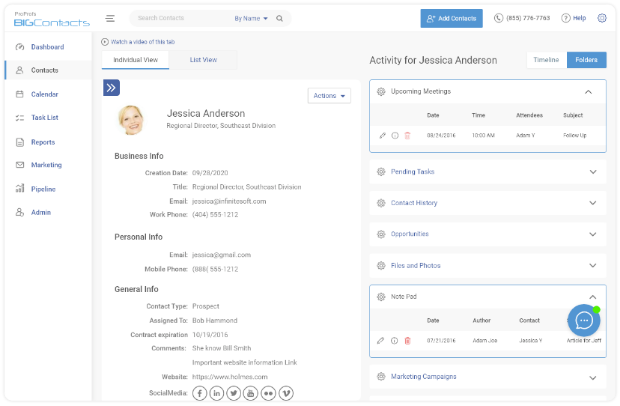
Automatic Data Capturing:
CRM systems automatically capture and store data for the leads that enter your sales funnel. This saves time that goes into manually updating the details of every lead.
Sales Pipeline:
The visual sales pipeline can help you view the position of every sales opportunity. You can easily track where the prospect is in your sales cycle and nurture them accordingly.
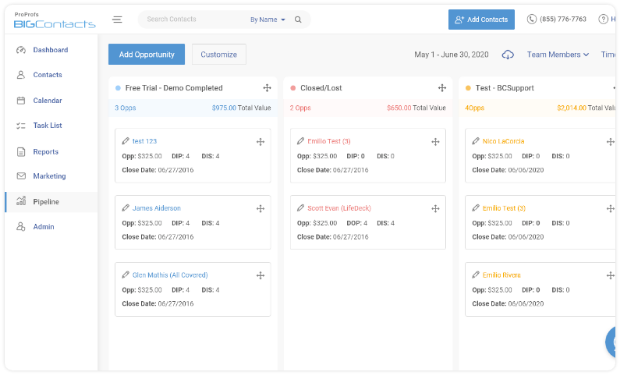
Email Marketing:
A CRM tool with integrated email marketing allows you to efficiently schedule and manage your email lead nurturing campaigns. CRM data can also be utilized to personalize your emails, make them more contextual, and relevant for your audience.
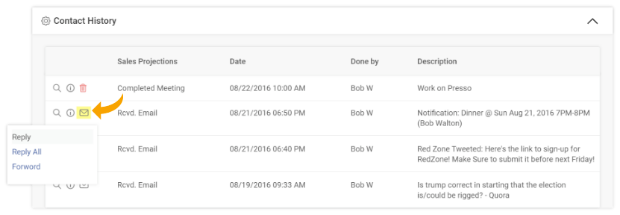
Reporting & Analytics:
You can use CRM to generate reports that help track the effectiveness of your nurturing efforts. This data can help you improve your upcoming campaigns.
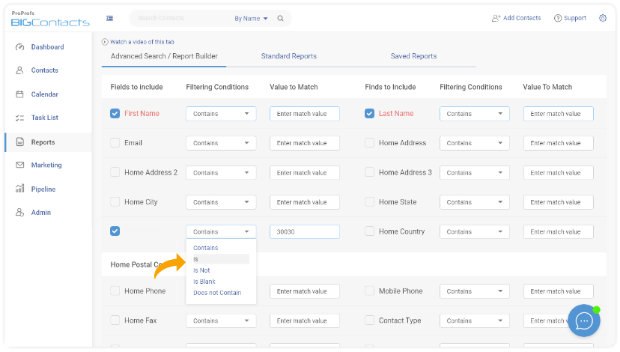
Grow Your Sales With an Effective Lead Nurturing Strategy
Lead nurturing, if done correctly, can positively impact your bottom line.
It not only helps your business but also empowers prospects to make more informed decisions. You can earn the trust of prospects by supporting them throughout the buying process. This enhances your brand image and helps you acquire a more credible position in the marketplace.
Implementing lead nurturing best practices is essential to guide prospective customers to the final purchase decision. With a well-crafted nurturing strategy, you can easily gauge the needs of your customers and optimize your content accordingly.
Furthermore, it is important to keep up with the changing customer expectations and industry trends. What works well for nurturing leads currently may prove to be completely ineffective in the future. Therefore, you must continuously monitor and review your nurturing strategy.
It is also important to invest in effective leads nurturing software that helps automate campaigns and track the movement of every sales opportunity. A powerful CRM such as BIGContacts can help you guide your prospects through the sales funnel easily. It can boost your conversion rate by allowing you to personalize interactions and build rapport.
FREE. All Features. FOREVER!
Try our Forever FREE account with all premium features!







